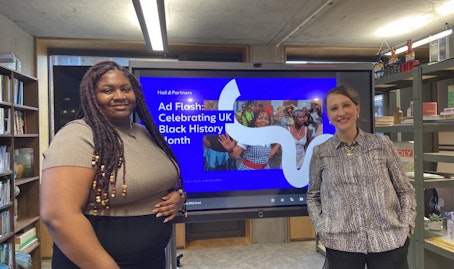Perspectives

Advertising today is crowded with false promises. Technology and targeting create an illusion of certainty: AI-generated creative at scale, dashboards that track every click, and hyper-personalized campaigns designed for efficiency. But as Tom Goodwin argued in his sharp critique of modern advertising, much of this “progress” rests on flawed assumptions.
At its core, advertising has always been about more than technology, efficiency, or short-term gains. At its best, it builds trust, shapes culture, and drives long-term profitability. Those fundamentals haven’t changed - but many modern practices distract us from them.
At Hall & Partners, we see an urgent opportunity: in a landscape obsessed with quick wins, the brands that stay anchored in strategy and fundamentals will be the ones to achieve lasting advantage.
Eight principles of effective brand strategy
1. Craft still signals quality in brand campaigns
One of Goodwin’s central arguments is that advertising has too often confused speed with effectiveness. Churning out templated AI creative may feel efficient, but it sends the wrong signal: a cheap-looking ad makes the brand look cheap.
Execution should always reflect meaning. Every choice - design, tone, production values - communicates something about the brand. Unless “cheap” is the message you want to send, cutting corners undermines trust.
Campaigns don’t succeed simply by being seen; they succeed when they reinforce what the brand stands for. Craft isn’t decoration - it’s a strategic lever that shapes brand perception and builds lasting credibility.
2. Mass visibility beats micro-targeting
The digital age promised laser-focused targeting, but brands aren’t built in micro-silos. They grow by reaching scale, creating cultural relevance, and embedding themselves in shared meaning.
The evidence is clear: fame drives memory, memory drives trust, and trust drives choice. That means targeting should focus on the type of response you want to generate - not just chasing the easiest clicks.
A degree of media “wastage” is often the best investment in building salience. In other words, don’t just optimize campaigns for those most likely to click today – make sure your brand is remembered tomorrow.
3. The power of consistency in brand messaging
In a world obsessed with novelty and the latest trend, consistency can feel unfashionable. However, brands are built through repetition. Constantly refreshing creative or resetting positioning doesn’t keep brands fresh, it erodes memory.
Mike Hall wrote in our original Shared Beliefs, “Consistency is a key to success.” Constant change undermines memory, which is essential for brand growth. When messages keep shifting, audiences can’t connect the dots, and nothing sticks.
True brand strategy isn’t about endless reinvention—it’s about balance. A consistent core idea, expressed through fresh creative variety, builds recognition while staying relevant. Hall and Partners’ brand strategy framework reinforces this view: when brands consistently build on their distinctive assets, they strengthen memory structures, making the brand more familiar, more trusted, and ultimately more likely to be chosen.
4. Growth beyond “Likely Buyers” with enhancement and conversion campaign strategies
One of the biggest traps in modern marketing is focusing only on those most likely to buy. It may feel efficient in the short term, but it limits long-term growth. If you keep fishing in the same pond, you’ll never discover new waters.
That’s where enhancement and conversion campaign strategies come in.
- Enhancement broadens mental availability by reaching future and light buyers—people who may not be in the market today but will be tomorrow. By getting on their radar early, your brand is already in consideration when the buying moment arrives.
- Conversion moves people further down the path once awareness is in place—deepening connection, reinforcing superiority, and building confidence to choose your brand over competitors.
Together, enhancement and conversion strategies ensure campaigns don’t just harvest existing demand but actively create new demand. The best-performing brands balance both. They expand reach to secure tomorrow’s growth while nudging today’s audiences closer to action. Over time, this dual approach compounds, turning casual familiarity into lasting preference and loyalty.
5. Why CTR of marketing campaigns falls short of brand building
Click-through rates may dominate most marketing dashboards, but they reveal little about whether a brand is actually growing. Outside of direct e-commerce, CTR is often meaningless, bots can click, people forget, and traffic spikes rarely translate into lasting value.
What matters is the brand response, not just the ad response. Campaigns should be judged on how they shift purchase commitment, emotional connection, and mental availability—the real drivers of long-term performance. Did people leave with a stronger sense of the brand? Do they feel more connected? Are they more likely to recall the brand in buying moments?
Our framework makes this clear: measure how people see, feel, think, and do in relation to your brand, rather than focusing narrowly on clicks. By tracking brand relationship change, marketers can turn campaigns from short-term activity into long-term advantage.
6. The value of universal campaign messaging
Personalization may sound powerful, but over-personalization fragments meaning. If every consumer sees a different message, no one truly knows what the brand stands for.
Brands must focus on building cultural participation, not isolated whispers. The strongest advertising doesn’t just speak to individuals; it speaks to the collective. Campaigns that tap into shared values, universal stories and collective experiences give brands a role in culture, making them part of conversations people want to have.
As our mapping shows, involvement strategies thrive on universality, not fragmentation. When every consumer gets a different, hyper-personalized message, the brand risks becoming invisible; no one knows what it stands for. By contrast, when everyone sees and shares the same bold idea, the brand builds presence, meaning, and belonging.
The campaigns that truly move markets aren’t the most tailored; they’re the most unifying. They create cultural touchpoints people can rally around, transforming brands from silent background players into active participants in people’s lives. In the long run, cultural participation is what secures mental availability and drives growth.
7. Distinct campaigns over imitation in competitive brand categories
In categories obsessed with benchmarks and “best practices,” too many brands end up copying each other. The result? A sea of sameness.
Distinctiveness is the antidote. “Zig while others zag” is more than a creative mantra; it’s a proven growth driver. Campaigns perform best when a brand looks, sounds, and feels unmistakably like itself. The formula for achieving this is simple but powerful: find the truth about your brand, make it matter to people, and own it consistently over time.
Brands that commit to their own truth—whether rooted in quality, innovation, purpose, or personality—build memory structures that competitors can’t easily imitate. This distinctiveness fuels salience which ensures campaigns are remembered for the right reasons and anchors the brand in both hearts and minds.
8. Fundamentals over jargon in brand growth
Finally, brand strategy must cut through the noise of “data × storytelling × tech.” As Goodwin highlights, this is often a meaningless distraction. Data and tech should serve strategy, not replace it.
Hall & Partners’ Brand Growth Framework brings focus back to the fundamentals:
- See – Mental availability and distinctiveness
- Feel – Emotional connection
- Think – Meaningful brand benefits
- Do – Purchase commitment and advocacy
Advertising campaigns that align with these levers deliver measurable growth. At the end of the day, the fundamentals of human psychology, memory, and emotion remain more powerful than any marketing trend.
Turning truth into lasting brand advantage
While much of the industry chases cheap speed, micro-silos, and clicks, the real opportunity lies elsewhere. Brands that commit to strategy—quality craft, mass reach, consistency, broader audiences, meaningful metrics, shared meaning, distinctiveness, and fundamentals—will outperform. This is a once-in-a-generation chance to grow while others burn out.
The Hall & Partners Brand Growth Framework offers a practical, evidence-based guide for navigating this landscape and avoiding today’s traps. The call to action is simple: audit your brand activity through the lens of See, Feel, Think, Do. Identify where you’re chasing clicks instead of building connections, and redirect efforts toward strategies that drive cultural participation, trust, and long-term growth. Brands that commit to these fundamentals won’t just perform better today; they’ll lead the market tomorrow.
Let’s work together. Get in touch to find out how we can help your brand find its voice and advantage.
Talk to our team of experts
Learn how we can deliver actionable insights and creativity to drive brand growth.








